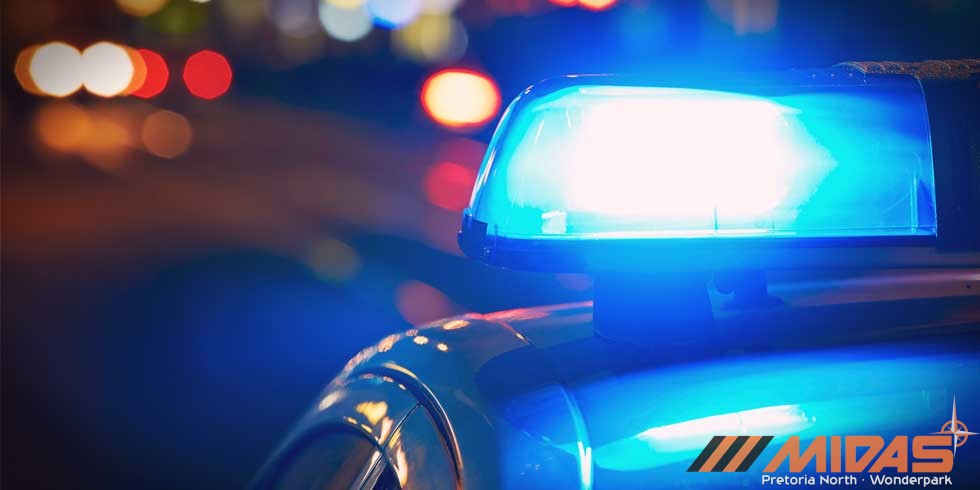
Not many South Africans would feel comfortable pulling over to the side of the road at night at the request of a car flashing blue lights. At the same time we know that ignoring the instructions of a police officer is an offence. Where does that leave you, driving home alone at night with blue lights flashing in your rear mirror? What do you do to stay on the right side of the law and protect yourself against criminals? Here is your answer. The Road Traffic Management Corporation and Justice Project South Africa have developed a protocol to be followed by any person who feels uncomfortable stopping for vehicles with flashing blue lights’.
The Road Traffic Management Corporation and Justice Project South Africa: Blue light protocol
Motorists are advised to study this advisory carefully and to commit the procedures to memory. If you follow the instructions to a tee there should be no reason for you to become endangered by either legitimate or bogus police.
If you are followed by a vehicle, marked or not, with blue flashing lights and it indicates for you to pull over, particularly at night, you would be wise not to do so if you feel uneasy or unsure that they are genuine police. Instead, it may be wise for you to indicate that you wish to proceed to a police station or public place before stopping.
However you must bear in mind that not stopping for genuine police can immediately escalate the situation and may endanger you further if you do not take extreme care to abide by ALL OF the rules laid down here.
When indicating to the occupant/s of the vehicle following you that you wish to have them follow you to a place of safety do the following:
1. Stay calm
2. Slow right down and turn your hazard lights on and then:
- Extend your right arm out of the window with an tightly outspread hand extended into the air with your forearm at 90 degrees to your shoulder
- Gesture for them to follow you by moving your forearm forward and back to the upright, and repeat this action several times
- Drive at NO MORE THAN 40km/h and proceed DIRECTLY to the CLOSEST police station or public place with CCTV cameras in operation, like a service station forecourt
- DO NOT drive to your own, or a friend of yours’ home, as this may endanger you and your loved ones if those following you are not genuine police
3.Go to a police station
- If you have a cell phone with you, call 10111 and tell them that you are being followed and are proceeding to the closest police station or public place
- If you are not sure where the closest police station is you can ask the 10111 operator
- If possible provide the registration number of the vehicle that is following you so it may be established if it is a legitimate police vehicle or not
- If you go to a police station, when you get there and if there are no police personnel in sight outside, hoot for as long as it takes for someone to come out
- Remain in your vehicle with the engine running, in gear and your windows wound up until such time as police from the station come out to you
- Cooperate fully with police personnel from that police station and the officers from the vehicle that followed you and explain immediately that you felt intimidated and therefore proceeded directly to the police station
4.Go to a service station
- If you go to a service station, drive onto the forecourt (centre of the service station) where the pumps or the convenience shop are so you will be in full view of the cameras
- Cooperate fully with the officers from the vehicle that followed you and explain immediately that you felt intimidated and therefore proceeded directly to the service station
- No matter what, if you are shouted at, do not respond by shouting back. Also be careful not to respond to any potentially violent acts by resisting in any way or becoming violent yourself. Remain calm and respectful and explain that the reason you did not stop immediately was because you were not comfortable that they were genuine police.
Media enquiries may be directed to:
Gilberto Martins – Acting CEO of the RTMC – 083 387 4436 – gilbertom@rtmc.co.za
Howard Dembovsky – Chairperson of JPSA

There is a massive difference between evading, or fleeing from police and having them follow you to a place of safety.
Both members of the public and genuine police should feel comfortable with this protocol, since it offers protection from attack in an isolated place by moving the stop to a public place where witnesses and assistance should be around.
WARNING: If you follow ALL of these steps precisely and the people pursuing you start shooting at you do everything that you can to evade them and get away without endangering yourself and others. Phone police immediately.
Disclaimer: This protocol is released as is in the public interest and neither JPSA nor the RTMC can accept any liability whatsoever for any deviation from it by any person.